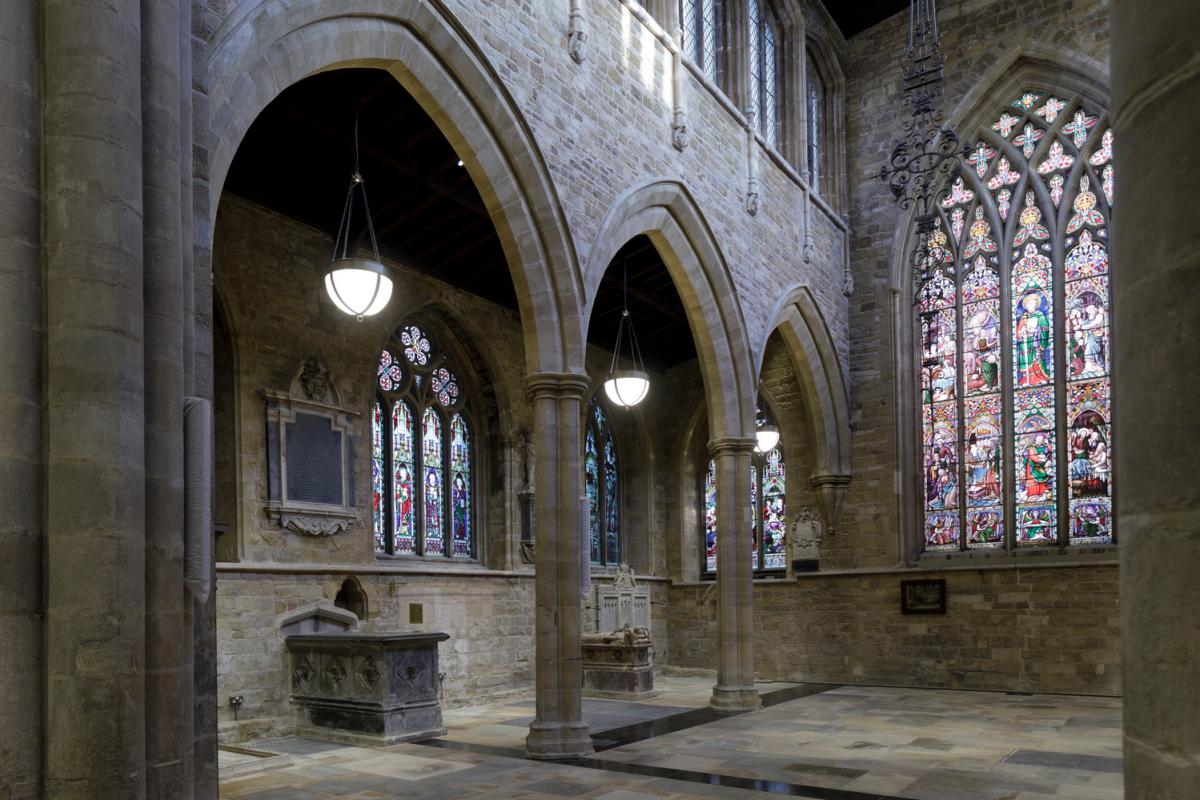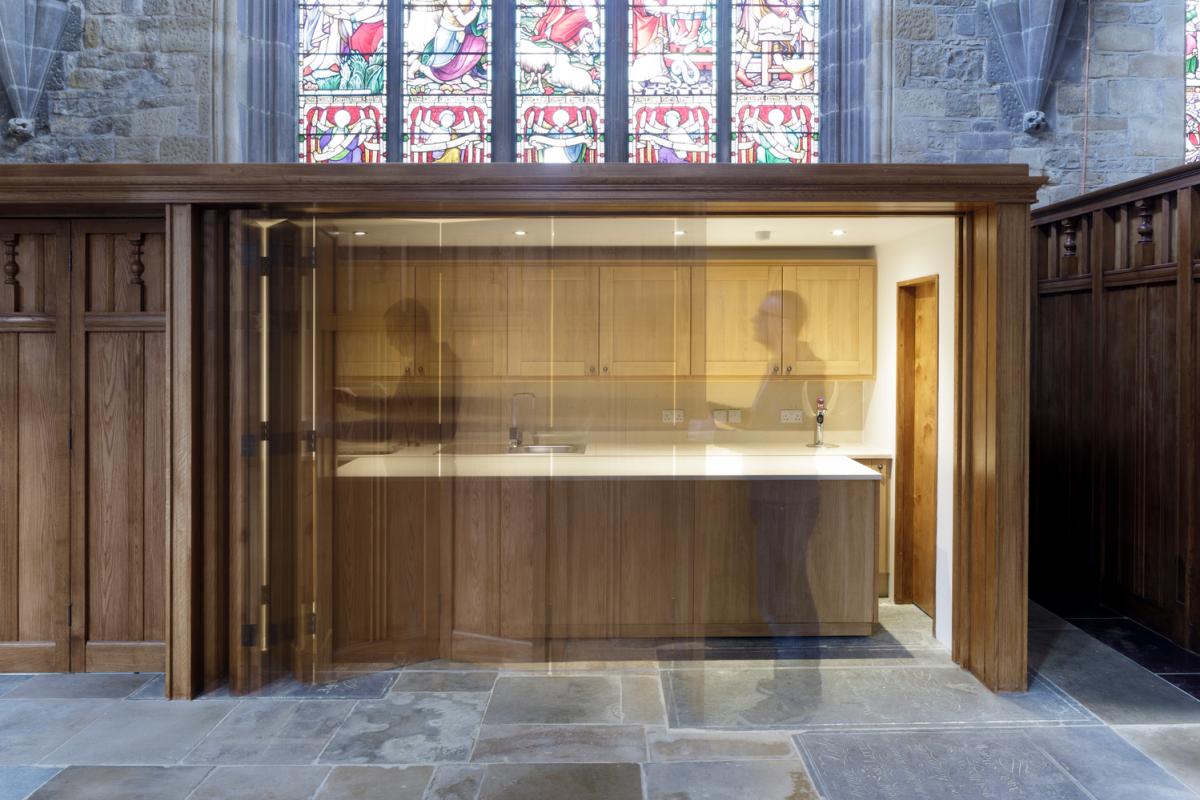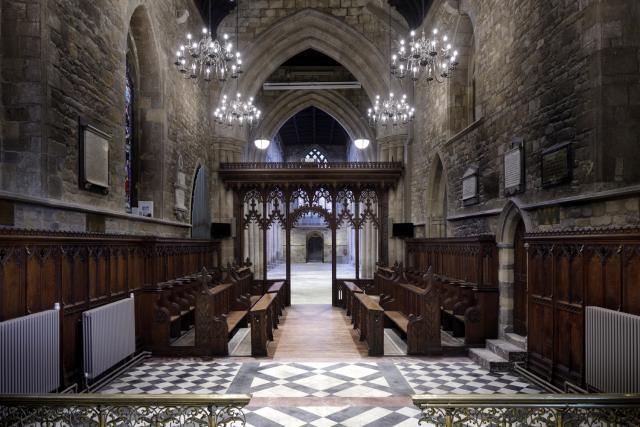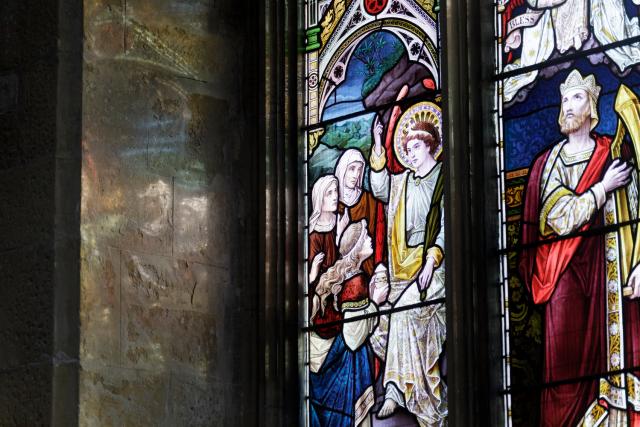
The Grade I listed St Mary's church is one of the most notable historic buildings in Leicestershire and is located on a site considered to be of significant archaeological importance, housing remains from the prehistoric to the post-medieval periods.
A popular parish church, St Mary’s plays a central role in community, hosting events such as the British Pie Awards, and the annual Christmas Tree Festival, which attracts more than 16,000 visitors each year.
We were appointed to help the church deliver a major £2 million redevelopment project, improving the church’s facilities to allow it to cater for an increasing number of visitors and make it accessible to all.

A new stone floor with underfloor heating was installed to return the floor to its pre-19th century height. A new internal north-west porch and new lighting and audio-visual systems were added. The building has also been re-wired and the Sir Malcolm Sargent Memorial Organ – named after the church’s illustrious choirmaster and organist from 1914-24 – has been restored.
A new refreshment facility was also created, intended to support the church's expansion.
The servery exists within its own self-contained cupboard, located beneath the north transept window, that can be completely closed off when not in use. As a concealed island unit, it can be wheeled out into the necessary position when required.
This concealable, movable unit is intended to have as little physical and aesthetic impact on the interior of the church as possible, while providing a new and desired facility for visitors, worshippers, staff, and volunteers.

A sympathetic language of materials has been used to ensure that the refreshment facility does not clash with its surroundings. The unit design is executed in oak with cornice work taken directly from the oak screen to the adjacent clergy and warden’s vestry. For the servery, the outer doors have been suspended on a concealed head track allowing them to be stacked out of the way at the side.
To make the church more comfortable, as well as accessible to a number of visitors, changes to the floor, lighting and audio-visual equipment were also undertaken.
Underfloor heating has been installed, and a new stone floor was laid to remove the level change and return the floor to its pre-19th century height. This work was done simultaneously, reducing impact on the heritage value of the fabric.
A new lighting scheme was also introduced. Controllable, bespoke pendant lights have been hung in the arcades between the nave and the aisles, and in the equivalent locations in the transepts. This adaptable lighting contributes to the church’s flexibility for various services and community functions and increases visibility at key times, particularly useful during long winter nights. A new audio-visual system was also installed improving the church’s ability to run services and events.


To create an added level of interior weather protection, a west transept storm porch has been added. Designed to be as compact as possible whilst accommodating wheelchair manoeuvrability, the solid elements of the porch adopt the lattice detailing in the existing outer doors, and the automated door mechanisms are fully concealed. The central axial doors are finished with bronze anodized framing to sit comfortably within the warm palette of natural materials, presenting a modern insertion to the building and mitigating any potential physical and aesthetic harm to the building’s heritage significance.
The changes have made the building more adaptable and contemporary, helping it serve its core visitors as well as its more transient visitors. As a church, St Mary’s is an intrinsically public space, and the interventions have made it more accessible to a broader audience, and more welcoming to those inside the building, enhancing, and developing, its primary purpose as a place of gathering and community.
Awards
National Churches Trust and the Ecclesiastical Architects and Surveyors Association Presidents' Award 2018: Winner
Image credits
Andy Marshall ©
Edward Kepczyk
Edward specialises in the conservation, informed repair, and creative reuse of secular and ecclesiastical buildings, including some of the country’s most significant historic sites.
Courtnay Ives
Courtnay is an architect whose experience includes a range of specialisms with heritage, ecclesiastic and non-secular schemes.

